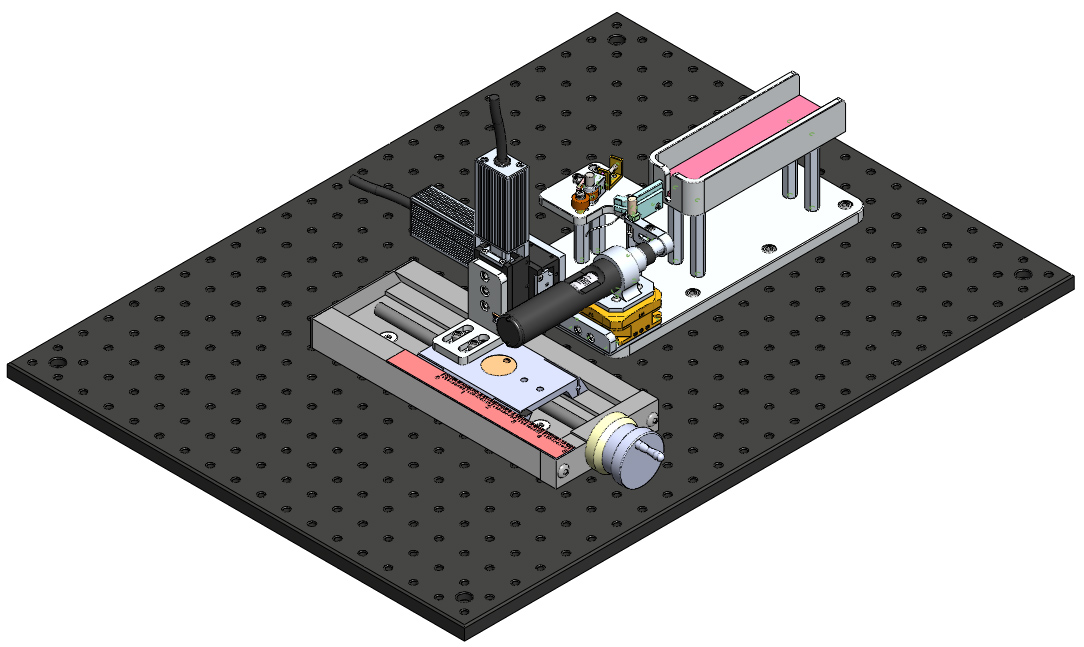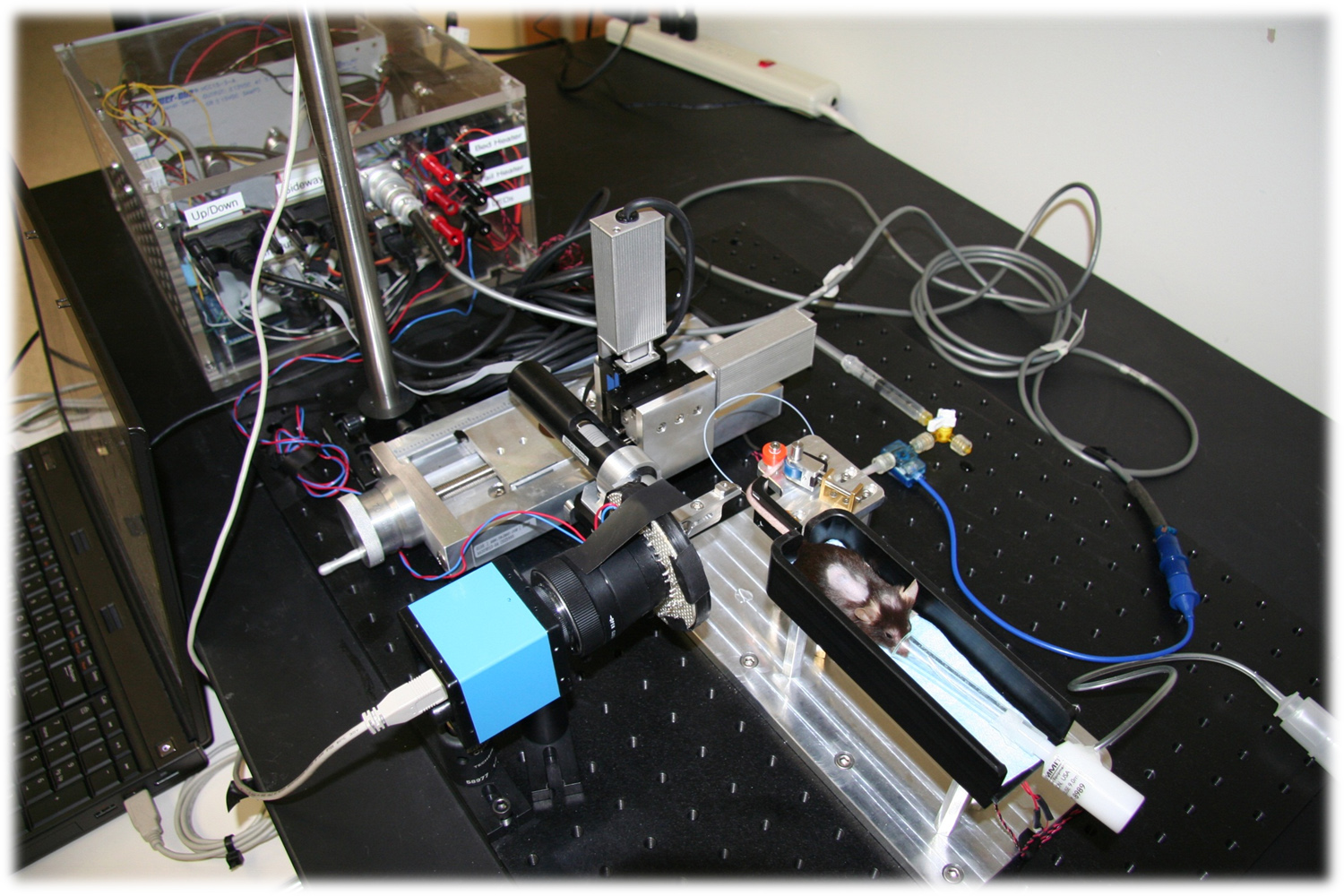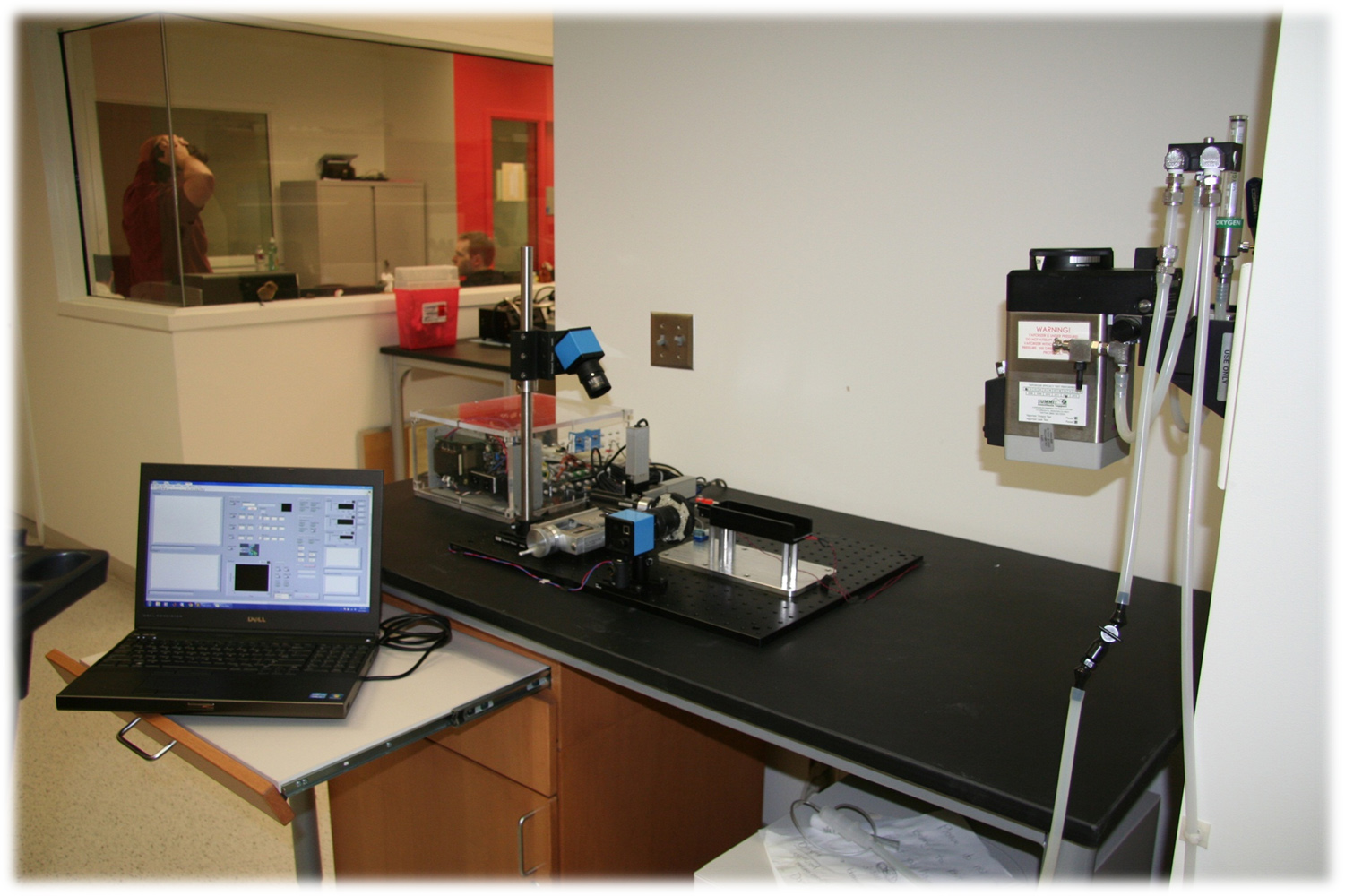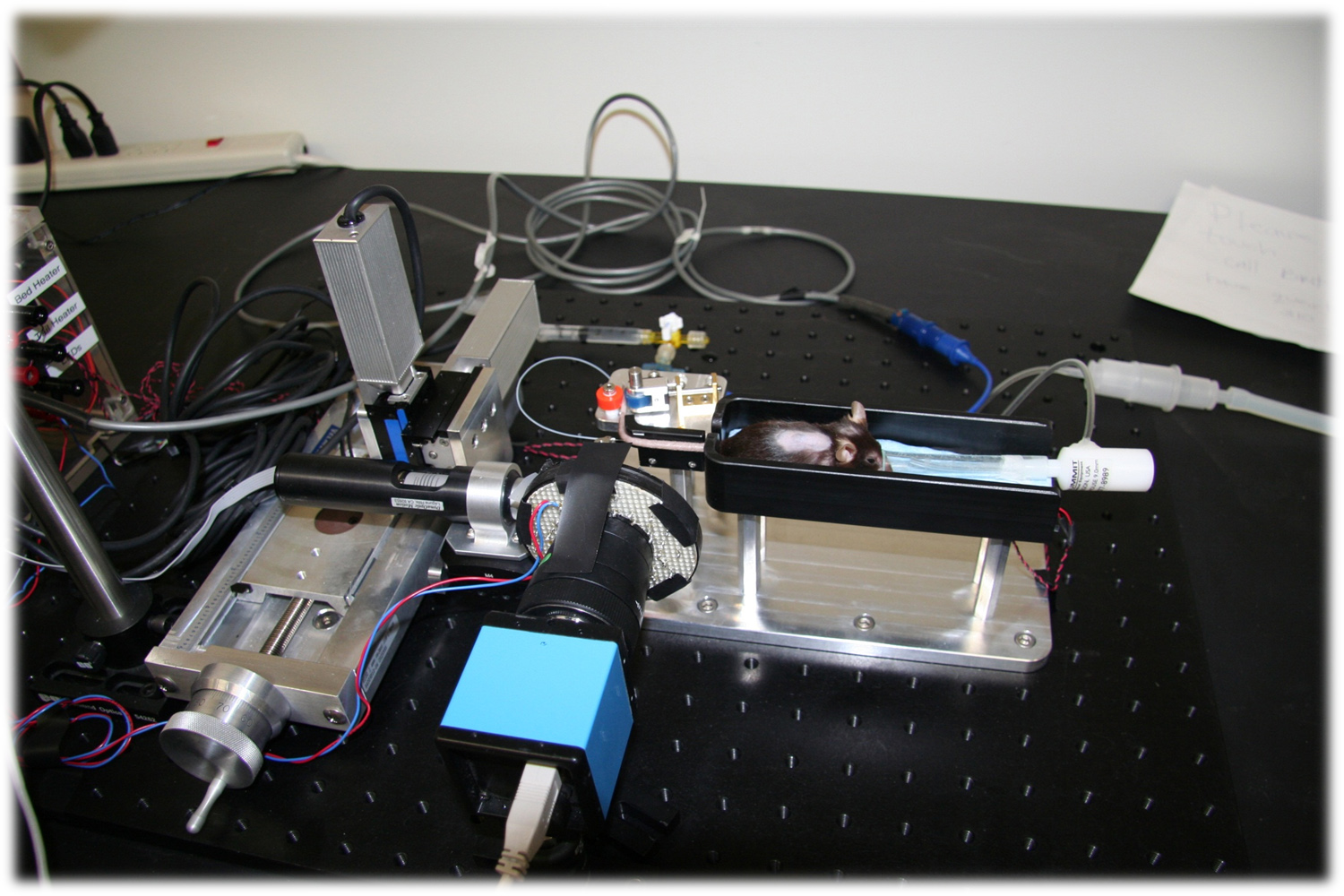| Mouse Tail Injection | |
Mouse tail injection studies the image-guided catheter injection control of the automated vascular injection, particularly for PET scans. The goal of this research is to develop a robust and efficient vein location estimation algorithm, and drive the catheter needle to perform chemical injection. Currently, the open-loop semi-automated prototype is able to leave averagely 20% radioactivity residual in the tail, between the performance of technicians (40%) and experts (3%). The automated design is currently under construction, and would be tested on both vein phantom and mice. A major challenge for this research is the compensation for the low image sampling rate, tail vein locating algorithm, and catheter needle bending prevention. Thereafter, a learning algorithm would be developed that self-tunes the injection trajectory planning strategy by analyzing the previous injection attempts. This research is a collaboration with the Chatziioannou Lab at UCLA.
|
|
Researchers: |
|
Related Publications:
|
|



